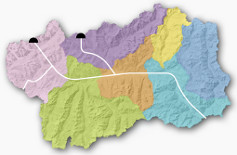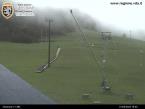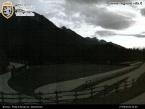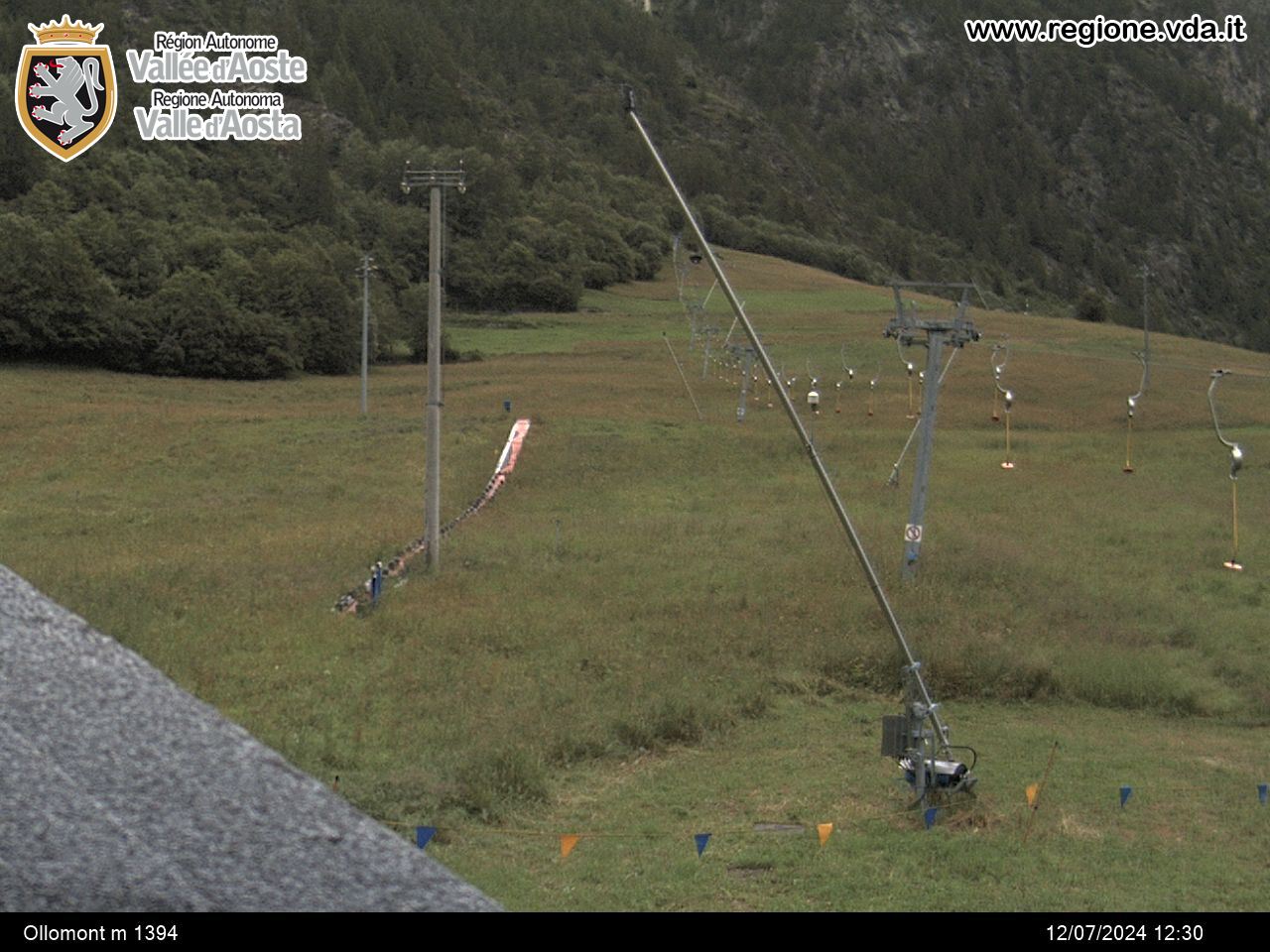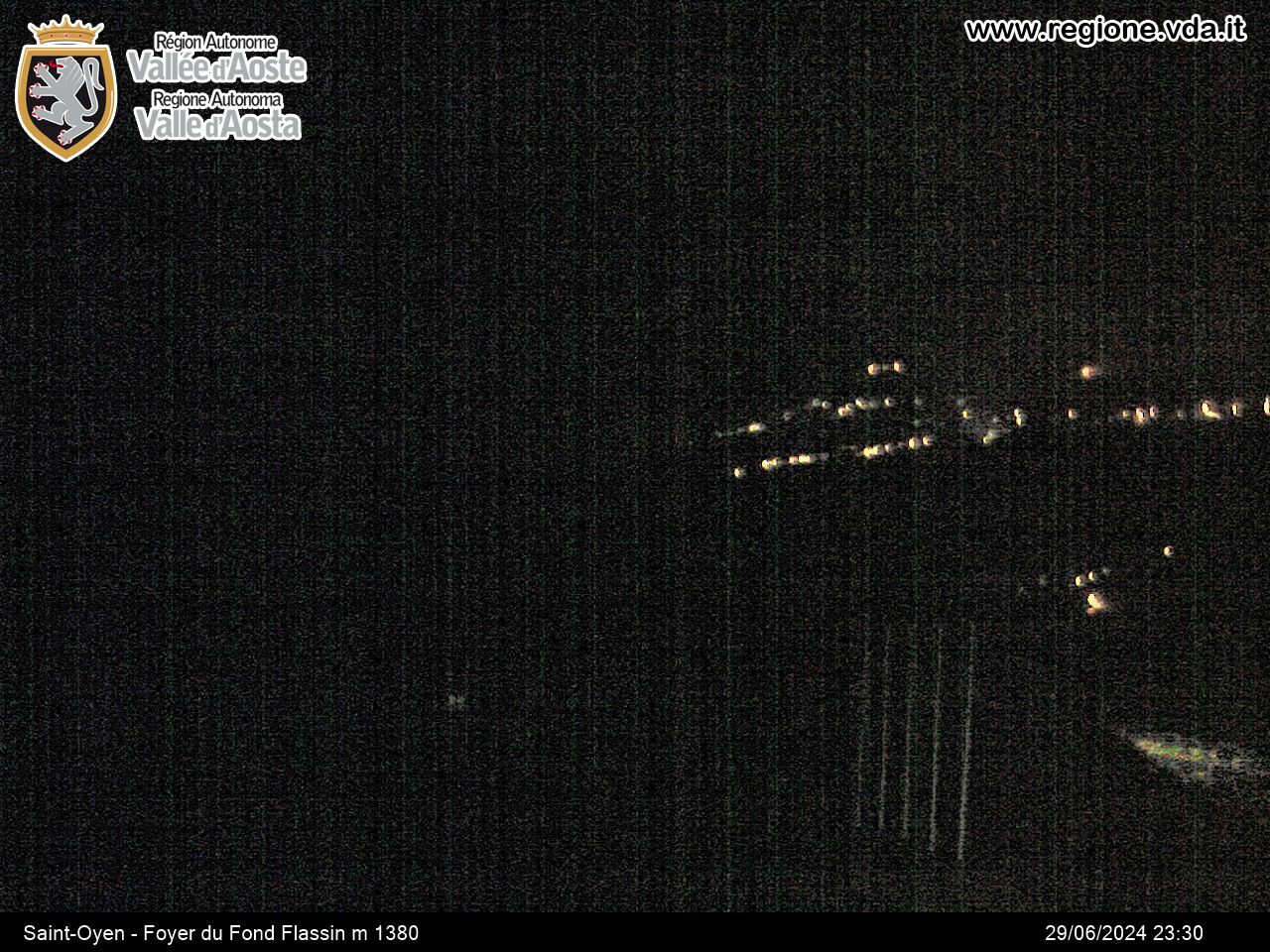Great Saint Bernard Pass
How to get there
Usually, the hill road is accessible from mid June to mid October.
Looking at the map, the long range of the Alps seems to divide Europe in two from East to West. The mountain range opens routes for communication between the population of the south with that of the north.
The Great Saint Bernard is one of these routes: for a long time it was one of the main and oldest-known gateways.
Description of the route
Situated 2472 metres above sea level, the pass is dominated by Chenalette in the north, Mont Mort in the south and Pain de Sucre in the west.
The position of the pass exposes it to almost constant winds and a temperature ranging from a minimum of -30°C and a maximum of +19°C. Annual snowfall can be as much as, and sometimes is greater than, twenty metres.
Originally, there used only to be a small path up the pass running alongside the lake.
Construction of the Roman road dates back to the year 12 BC under the Emperor Augustus. Since Roman times, when the temple dedicated to Jupiter Poenius was built on the pass, the valley has constituted an important access route through the Alps. Around the Roman Temple, buildings have been discovered dating back to the same time, at an archaeological site known as Plan de Jupiter.
In 1045, Saint Bernard of Menthon built a hospice managed by a congregation of canons regular on the pass for the purpose of recovering, helping and protecting the many travellers, including pilgrims, who were following the Via Francigena.
Since at least the 16th century, the hospice’s canons trained large molosser dogs, to guard and protect the hospice, but also for numerous other purposes. They are most famous for helping the canons mark trails in fresh snow, providing forewarning of avalanches, and finding lost travellers in bad weather or even buried under snowslides. The breed now known as the Saint Bernard was selected from these dogs.
Excursions with these dogs are organized from June to September.
If we were to mention all the famous people who marked this historical pass with their footprints, there would be some for every century. However, the most spectacular passage remains that of Napoleon who with his army of 40,000 men and 5,000 horses, 50 canons and 8 howitzers, crossed the valley in 1800. The passage of the artillery was arduous to say the least, and it took eight days for the entire army to pass.
In 1892 the current carriageway was opened on the Swiss side and only in 1905 on the Italian side.
The view of a small lake, frozen until late spring can be admired at the pass along with the breath-taking scenery of the surrounding mountains. The area is a destination for mountain skiing thanks to the snow which remains until the start of June, and for excursions during the summer.











